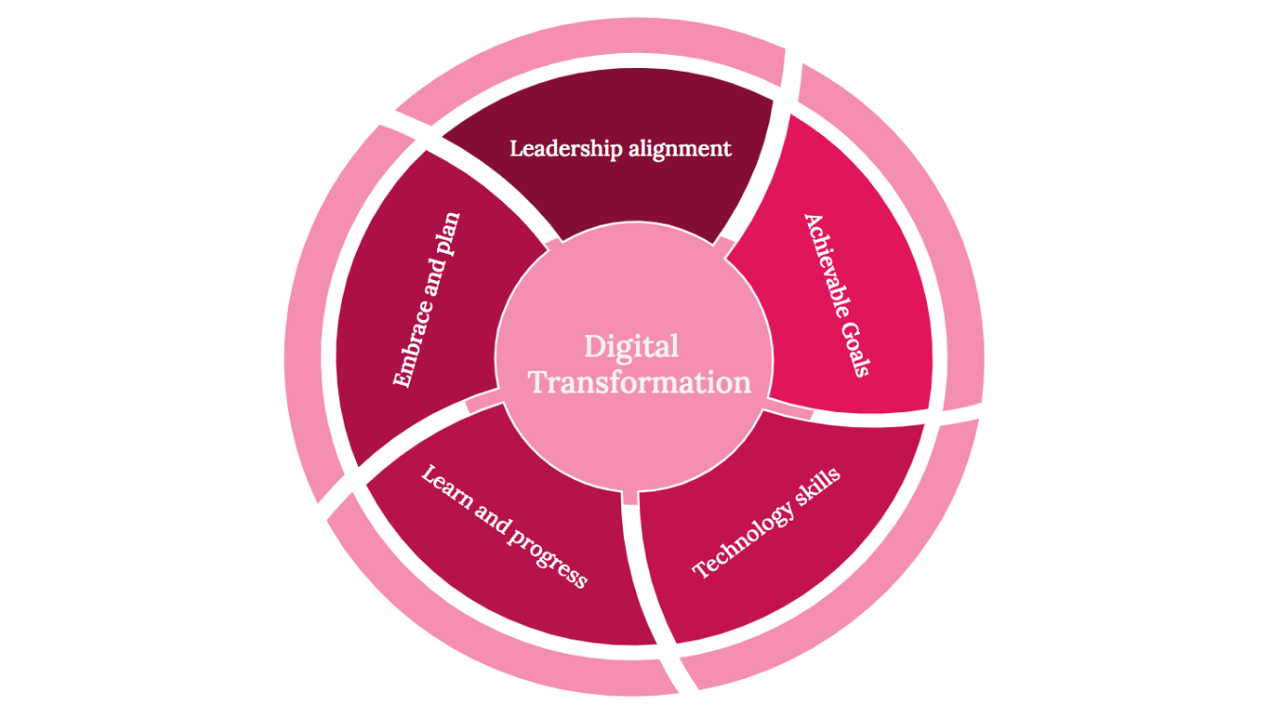
Digital transformation for traditional organisations
By
Published: April 08, 2021
First principles for effectiveness in transformation.

Many traditional organisations are ambitiously embarking on their journey of Digital Transformation. Having transformation as part of an organization's goals is a good signal that they have realised that it is absolutely essential to keep up with changing trends and satisfy the market mass that is steadily adopting digital technologies as part of their day to day lives. And, historically, some companies have failed in their transformation journey or are making a very slow process because of various reasons. Here are some popular anti patterns generally observed and how the organizations can take effective steps that would steadily help them transform while keeping their lights on.

Many traditional organisations are ambitiously embarking on their journey of Digital Transformation. Having transformation as part of an organization's goals is a good signal that they have realised that it is absolutely essential to keep up with changing trends and satisfy the market mass that is steadily adopting digital technologies as part of their day to day lives. And, historically, some companies have failed in their transformation journey or are making a very slow process because of various reasons. Here are some popular anti patterns generally observed and how the organizations can take effective steps that would steadily help them transform while keeping their lights on.
Organisation leadership alignment
Oftentimes transformation goals are set by a visionary leader in the C suite and the rest of the leadership group and the ground teams may hesitantly agree to go with it. Some of the leadership team may lack the understanding of digital technology’s potential and how adopting it is fuelling our economy and the big product organisations that have monopolized the market. This kind of misalignment and lack of knowledge impacts and slows down the transformation process tremendously. A good head start is when your own organisation leadership team is well aligned on the transformation goals and the values it brings to your business. Create a visionary compelling story of how your organisations can benefit from it and ensure your leadership team is well aligned before you heat up the engines to keep going.Set small achievable goals
Any kind of change that involves human society is hard and time consuming. Our brains are so tuned to biases of the past and it takes a great amount of energy to rewire the brain to think differently. So be willing to spend that effort and time to transform. Plan and make a small step that could be a good learning experiment to get a preview of what it really means to transform and how to go about it. Keep the learnings in mind, slowly re-iterate and then keep moving, taking one step at a time. Aggressive spending or setting unachievable goals is not the ideal way to expedite the process. Slow and steady progress is more valuable.Skilled autonomous transformation teams
Some teams that are assigned with transformation goals may not have knowledge about latest technologies or how to execute such humongous changes. Even if they are knowledgeable, sometimes they struggle to implement the changes in the system that has run traditional for years.This leads to poor execution and eventually another failed attempt of transformation. Ensure the transformation teams are digitally skilled, empowered and have all the necessary support to implement changes needed before you assign them with transformation goals.Support, learn and focus on progress
Sometimes organisations get so hung up on the money and time they spent on the transformation experiment and why it wasn’t successful. It's not always easy to put a solid number on these kinds of transformation experiments. Instead, focus on the learning and trust that this is an investment for the future. Learn why it wasn’t successful, measure how much you gained from this experiment and see how you can reiterate with the learnings and try again. Don’t be surprised you failed, instead pick up the learnings and give it another try. Keep moving forward and slowly you will see the changes starting to manifest.Communicate and share
Progress is fast and easy when the mass is well educated of the value and are supportive of the changes. Ensure any kind of learning from small transformation experiments are well shared within the organisation and don’t hesitate to share the failures too. Being vulnerable and open is one of the key psychological success factors for mass adoption. When people make a connection with the experience, it makes them more engaged, eventually driving the buy-in for this kind of human intense transformation journey.Plan your next big moves ahead
If you are an organisation that was successful in a transformation experiment, then you would’ve started to realise the cost and the side effects of it as well. Start planning for how you can mitigate some of the implicit side effects that come with the transformation and start laying the groundwork for facing those challenges when it's time. For example, if some of the old technologies that are becoming obsolete as part of the transformation, start planning on how to manage the workforce that needs to embrace the new changes.Disclaimer: The statements and opinions expressed in this article are those of the author(s) and do not necessarily reflect the positions of Thoughtworks.
Related Blogs
-
 Digital transformationMastering Digital Transformation: A Case Study (Part 1)Learn more
Digital transformationMastering Digital Transformation: A Case Study (Part 1)Learn more -
 Digital transformationMastering Digital Transformation: A Case Study (Part 2)Learn more
Digital transformationMastering Digital Transformation: A Case Study (Part 2)Learn more -
 Digital transformation21st Century Transformation: Harnessing digital to build resilience in the face of disruptionLearn more
Digital transformation21st Century Transformation: Harnessing digital to build resilience in the face of disruptionLearn more

















